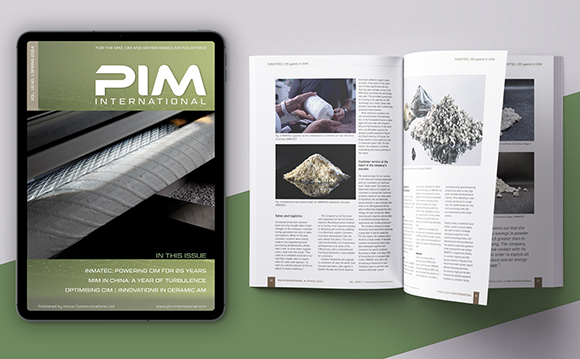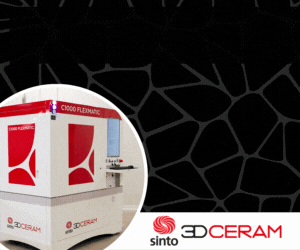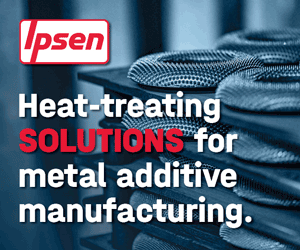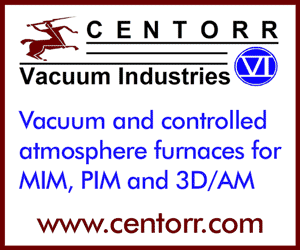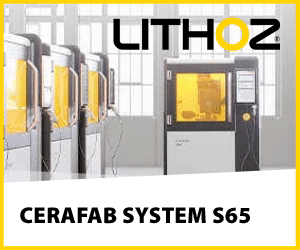Metal Injection Moulding: Building on solid foundations in the medical sector
The medical sector was one of the first major markets for the Metal Injection Moulding industry and in recent decades it has seen a significant growth in applications.
In the following report Nick Williams reviews the continuing development of this important sector, with a specific focus on market trends, applications and materials, both regionally and globally. Current challenges to further growth are highlighted and industry insight is provided from industry experts from Asia, Europe and North America.

Fig. 1 MIM has become the preferred technology for many small, high volume precision medical device components such as these stainless steel jaws (Courtesy CMG Technologies)
Over the last twenty five years, Metal Injection Moulding (MIM) has become an increasingly important manufacturing technology for the medical device industry. MIM’s ability to produce high volumes of precision components to net-shape has seen its use grow from early applications such as endoscopic instruments to a huge range of both simple and complex surgical devices, the next generation of medical robotic systems and implants with unique properties.
From a historical perspective, it was the North American medical device industry that first took advantage of the opportunities presented by MIM technology. The most recent figures that are available from North America’s Metal Injection Molding Association (MIMA) indicate that the combined medical/dental sectors accounted for an estimated 32% of US MIM shipments in 2015, making the sector the largest consumer of MIM components by weight shipped. Whilst these figures include dental applications that are not covered in this report, MIM dental components account for a small proportion of tonnage shipped, primarily because of the very small size of orthodontic brackets.
These figures contrast with Europe where medical applications are estimated to account for between 10 and 15% of the total MIM market. There are, unfortunately, very limited data on the breakdown of Europe’s MIM market and it should be remembered that Europe’s MIM industry evolved in a very different direction from that of North America thanks to early successes in the automotive industry, a sector that continues to account for the largest proportion of European MIM production. In Japan, meanwhile, the Japan Powder Metallurgy Association reported that in 2015 the medical device sector accounted for just over 19% of total Japanese MIM production by sales value, up 1% from the previous year.
Whilst data for other countries and regions remain hard to come by, there is broad agreement that the medical sector continues to be a market that is rich with potential for MIM producers in all world regions. Populations are living longer and many require greater access to healthcare systems that offer an ever-growing list of life-saving and life-enhancing surgical procedures. This feeds into the growing demand for cost-effective surgical devices, implants and related applications.
Technology awareness and regional trends
Since the first use of MIM in medical device applications, the technology has advanced dramatically in terms of material choice, process control and reproducible quality across all end-user sectors. Today, it has matured to the extent that MIM applications can be found in the most demanding and critical high-performance applications in a broad range of industry sectors, from high-temperature aero-engine components to advanced automotive and power generation applications.
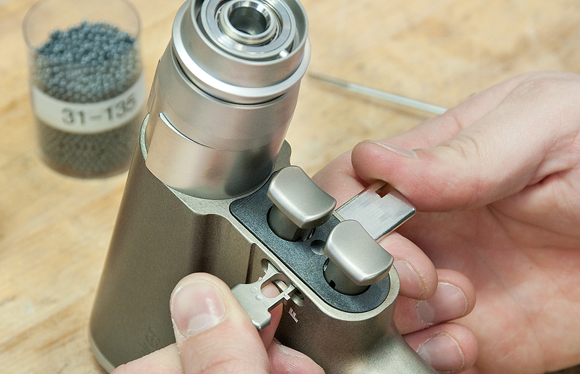
Fig. 2 This Stryker surgical tool features a number of different MIM parts. Stryker Instruments’ relationship with MIM dates back to 2004 when the company’s first MIM part was introduced. Following the successful development of a number of additional MIM components, the vertical integration of MIM at Stryker was initiated in 2006. The company’s in-house MIM facility was commissioned in December 2009 and by the summer of 2010 the manufacturing equipment had been qualified (Courtesy Stryker) [1]
Putting Metal Injection Moulding’s development in the medical sector into context, Tom Houck, Vice President – Operations at US-based MIM producer ARC Group Worldwide, Inc., told PIM International, “Since the early 1990s, MIM technology has seen an increase in awareness of the process, especially from the medical device industry. When it was first introduced, the technology fell short of the expectations of product designers and R&D engineering with most of the issues revolving around process control and repeatability. Variance from lot to lot processing and Cpks were commonplace and MIM did not make for a reliable alternative process. However, over the last twenty five years or so, the development of MIM and the improvements to the technology have resolved these setbacks.”
“MIM is now considered to be a reliable process with excellent repeatability and this has driven the growth of MIM in the medical industry. It has also allowed designers to create products that may otherwise not be capable of being produced due to the uniqueness of moulding a part out of metal instead of machining or other types of processes. The level of awareness still has room for growth, but the success of current applications has increased confidence in MIM and, as designers move from one company to another, they are becoming key advocates of the technology,” added Houck.
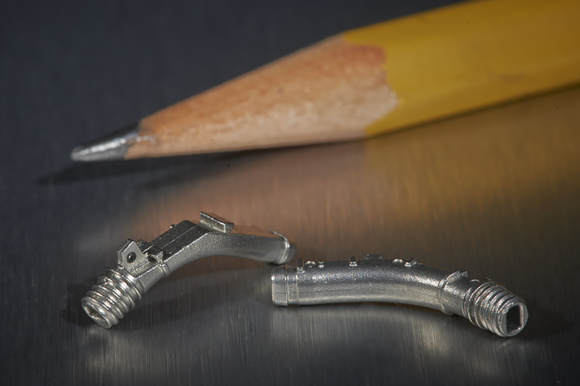
Fig. 3 This hearing aid sound tube won an MPIF Award of Distinction in 2014. The part is made by Indo-MIM for its customer, Phonak. The part’s function is to enhance sound frequency and improve hearing. Manufactured from 316 stainless steel, the highly complex part achieves all its features in the as-sintered condition, with only glass bead blasting for a better finish performed as a secondary operation. Designed for MIM, it is estimated the part provides 20% cost savings over competing forming processes and 500,000 parts are delivered annually (Courtesy MPIF)
Whilst the growth of MIM in all sectors has been dramatic, with the industry growing from sales of less than $800 million in 2005 to more than $2 billion in 2016, the technology remains beset by a combination of limited awareness and misconceptions about the process and final properties. Houck explained, “One of key misconceptions of those who have a good understanding of MIM relates to density. There is still a perception that, since the process yields 96% plus dense parts, it cannot match the properties of wrought material. While MIM parts may not be 100% dense, they have the capability of performing as well as cast or wrought material and can replace more expensive machined parts.”
- 1/2
- Next




